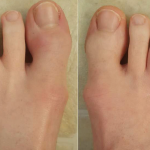 EULAR 2022 (VIRTUAL)—Tyrosine kinase 2 (TYK2) is an intracellular kinase in the Janus kinase (JAK) family that mediates the signaling of multiple cytokines, including interleukin (IL) 23, IL-12 and type 1 interferons, which are integral to the immunopathogenesis of psoriatic arthritis (PsA). Deucravacitinib is an oral, selective intracellular JAK inhibitor that, at therapeutic doses, does not inhibit JAK1, JAK2 or JAK3.1,2 The agent is currently being evaluated in global clinical trials to treat diseases including PsA, psoriasis, lupus and inflammatory bowel diseases.
EULAR 2022 (VIRTUAL)—Tyrosine kinase 2 (TYK2) is an intracellular kinase in the Janus kinase (JAK) family that mediates the signaling of multiple cytokines, including interleukin (IL) 23, IL-12 and type 1 interferons, which are integral to the immunopathogenesis of psoriatic arthritis (PsA). Deucravacitinib is an oral, selective intracellular JAK inhibitor that, at therapeutic doses, does not inhibit JAK1, JAK2 or JAK3.1,2 The agent is currently being evaluated in global clinical trials to treat diseases including PsA, psoriasis, lupus and inflammatory bowel diseases.
In a phase 2 trial, deucravacitinib proved significantly more efficacious for achieving minimal disease activity in patients with active PsA after 16 weeks than placebo. This data was presented by Arthur Kavanaugh, MD, a rheumatologist and professor of medicine at the University of California, San Diego, La Jolla, Calif., during the 2022 Congress of the European Alliance of Associations for Rheumatology (EULAR), June 1–4, Copenhagen, Denmark.
This double-blind, multicenter study (NCT03881059) evaluated the effects of deucravacitinib on individual components of minimal disease activity. Minimal disease activity was defined as achieving five of the seven following criteria:
- A tender joint count of ≤1;
- A swollen joint count of ≤1;
- Tender entheseal points of ≤1;
- Patient global assessment of disease activity score of ≤20;
- A patient global assessment of pain score of ≤15;
- A Health Assessment Questionnaire-Disability Index (HAQ-DI) score of ≤0.5; and
- A Psoriasis Area and Severity Index [PASI] score of ≤1 or body surface area [BSA] of ≤3%.
The study enrolled 203 patients with a PsA diagnosis of at least six months who fulfilled Classification Criteria for PsA at screening and had active joint disease in at least three tender and swollen joints, high-sensitivity C-reactive protein (CPR) of at least 3 mg/L and at least one plaque psoriasis lesion of at least 2 cm. To participate in the study, patients also had to be either intolerant to or experienced ineffective treatment with at least one nonsteroidal anti-inflammatory drug (NSAID), one conventional synthetic disease-modifying anti-rheumatic drug (csDMARD) and/or one tumor necrosis factor (TNF) inhibitor.
Patients were randomized in a 1:1:1 ratio to receive either 6 mg of deucravacitinib once daily, 12 mg of deucravacitinib once daily or placebo. The percentage of patients who achieved minimal disease activity and the proportion of patients who achieved each of component of minimal disease activity, minimal disease activity responders and nonresponders were assessed through week 16.
The Results
Of the 203 patients who were randomized, 180 patients completed the 16-week study, including 88% of the placebo group (n=58 of 66 patients), 90% of the 6 mg of deucravacitinib group (n=63 of 70 patients) and 88% of the 12 mg of deucravacitinib group (n=59 of 67 patients). The patient demographics and baseline disease characteristics were relatively similar across all three groups.



